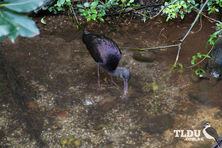
Shoppers Feedback:
Jan 17, 2017
Hello Ros,
I have now paid the invoice, but I would like to write to you just to say a big THANK YOU for getting me the Penguin!
The ChatterMate Penguin became a nice memory for me when I was in New Zealand, and I am so greatful to you for arranging so that I could have it! :-)
Thank you so much!!!!!!!!!!!
Regards,
Malin
Hi Ros,
Many thanks for your very kind email. I really appreciate your prompt reply!
I appreciate your advice regarding the decorations and customs. These are a gift for my daughter’s exchange student family so when she returns home on the weekend I will show her and see if she loves them as much as I do!
Thanks so very much again - I am truly grateful for your kind assistance.
Kind Regards
Bernadette
Ros,
Thanks again for the great customer service. It's a refreshing change!
Best regards,
Trevor
Hey Roz,
Thank you for your emails. Just loved my first order. The cute little Aussie bush critters are going to be used for an office Christmas decoration. My colleagues also liked them and talked about making an order to your site. I'll send you a photo when completed.
I'll be ordering more to send to my daughter's host family in America.
Fabulous service from you.
Kind regards,
Michelle
Thankyou. Order arrived today. One very happy grandson with his new beastly binoculars.
Regards,
Irene
- Home
- Wild Wonders
- Shop
- Aromas of Australia
- Australian Made
- Books
- Book Marks
- Christmas Decoration Sale
- Christmas Decorations
- Clocks
- Drink Holders
- Garden & Outdoor
- Gift Wrapping & Cards
- Home & Giftware
- Jewellery
- Keyrings
- New Products
- Pencils & Pen Holders
- Photo Frames
- Plush Toys
- Plush with Sound
- Sheepskin Rugs
- Stationery
- Stone Carvings
- Toys & Games
- Travel Goods
- Wedding
- Wild Figurines
- Wildlife Safety Products
- Wind Chimes
- Wine Charms
- View All Products
- Wildlife
- Australiana
- Explore
- Contact Us
Glossy Ibis

Quick Facts
| Length: | - |
| Height: | 55 cm |
| Weight: | 500 grams |
| Colour: | Looks black from a distance, but is reddish-brown on the neck and the body is bronze-brown with meta |
| Habitat: | - |
| Food: | Frogs, snails, aquatic insects and spiders |
| Predators: | - |
| Status: | Vulnerable in VIC. Not Present in TAS. Secure in all other states and territories in Australia |
The Glossy Ibis is a small dark ibis that looks black in the distance. At close quarters the neck is reddish-brown and the body is a bronze-brown with a metallic iridescent sheen on the wings. The distinctive long, curved bill is olive-brown, the facial skin is blue-grey with a bordering white line that extends around the eyes. The eyes, legs and feet are brown.
The Glossy Ibis is the smallest of the three species of ibis in Australia.
There are no similar species to the Glossy Ibis. Both the Straw-necked Ibis and the Australian White Ibis are larger and have variable areas of white on their body and wings.
The Glossy Ibis frequents swamps and lakes throughout much of the Australian mainland, but is most numerous in the north. It is a non-breeding visitor to Tasmania and the south-west of Western Australia
The Glossy Ibis requires shallow water and mudflats, so is found in well-vegetated wetlands, floodplains, mangroves and ricefields
The Glossy Ibis is both migratory and nomadic. Its range expands inland after good rains, but its main breeding areas seem to be in the Murray-Darling Basin of New South Wales and Victoria, the Macquarie Marshes in New South Wales, and in southern Queensland. Glossy Ibis often move north in autumn, then return south to their main breeding areas in spring and summer.
Glossy Ibis feed on frogs, snails, aquatic insects and spiders in damp places. They feed by probing the water and mud with their long, curved bill.
The Glossy Ibis builds a platform nest of sticks, usually with a lining of aquatic plants, between the upright branches of trees or shrubs growing in water. Glossy Ibis breed together with other ibises and other water birds in small colonies.
Diversion of water flow into wetlands for irrigation and other purposes disrupts breeding by restricting areas of shallow water. The Macquarie Marshes have suffered greatly in this regard over many years, with the resultant failure of Glossy Ibis to nest there.
Last Updated: Thursday 9th January, 2014
BirdLife Australia - www.birdlife.org.au
BUSH e-TELEGRAPH
Signup for our monthly newsletter the "e-Telegraph"
Quick Links
Home | The Beginning | About The Land Down Under | Wild Wonders | Advertise on Wild Wonders | Christmas Decoration Sale | Christmas Tree Decorations | Drink Holders | Plush with Sound | Stone Carvings | Wildlife Wine Charms | Freebies | Australian Wildlife | Help Our Wildlife | Australiana | Photo of the Month | Explore The Land Down Under | Contact Us | Legal Notices

